Reports Table of Contents
- Homelessness Prevention Framework
- Home Together
- Centering Racial Equity in Homeless System Design Report- 2021
- Alameda County Homeless Mortality
- All Home Regional Action Plan 2024
- California Statewide Study of People Experiencing Homelessness (CASPEH)
- Youth Action: A Way Home - 2022
- Big Moves for Housing and Economic Security - 2022
- Evaluating Project Roomkey in Alameda County: Lessons from a Pandemic Response to Homelessness - 2021
- Plans and Reports Archive >>
Homelessness Prevention Framework
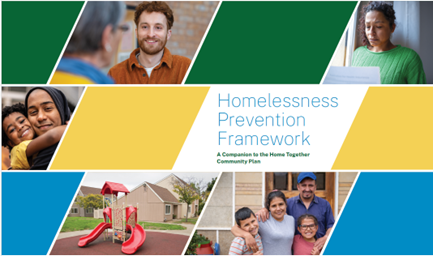
Alameda County’s Homelessness Prevention Framework outlines the actions and resources needed to significantly prevent homelessness in Alameda County. The Framework is a companion to the Home Together Community Plan. Creation of the Framework was led by the Homelessness Prevention Strategy Team, a group of more than 50 community members, including people with lived experience of homelessness, who dedicated their time and expertise to this effort.
Home Together
Home Together is Alameda County’s strategic plan for building a coordinated homeless response system that can meet the needs of people experiencing homelessness and reduce racial disparities.
The Home Together 2026 Community Plan was adopted by the Alameda County Board of Supervisors, the Conference of Mayors, the Oakland-Berkeley-Alameda County Continuum of Care, and cities across the county in 2022. The plan outlines strategies and action steps shaped by input from people with lived experience, system leaders, service providers, and partners in the homelessness response system.
Building on lessons from Home Together 2026, Alameda County is now refreshing the plan as Home Together 2030. The updated plan will integrate::
- Updated analysis and modeling for the countywide homelessness response system
- An updated and expanded racial equity analysis
- Feedback from a wide range of stakeholders, especially people with lived experience of homelessness
- The latest Point-in-Time Count and systemwide data
These elements will guide actionable strategies and investments to address homelessness and racial disparities in the context of California’s evolving policy and funding landscape.
Home Together 2026 Annual Progress Updates
Progress on the implementation of the Home Together Plan is reported annually. Data is collected annually in the following areas to analyze progress towards the Home Together goals and to inform strategic planning for Alameda County's homelessness response system:
- Funding and investments
- System inventory
- Home Together strategies and activities
- Key service and outcome measures
Home Together Year 3 Progress Update
- Home Together Year 3 Progress Update Report
- Appendix A: Funding and Investments
- Appendix B: System Inventory
- Appendix C: Key Performance Measures
Home Together Year 2 Progress Update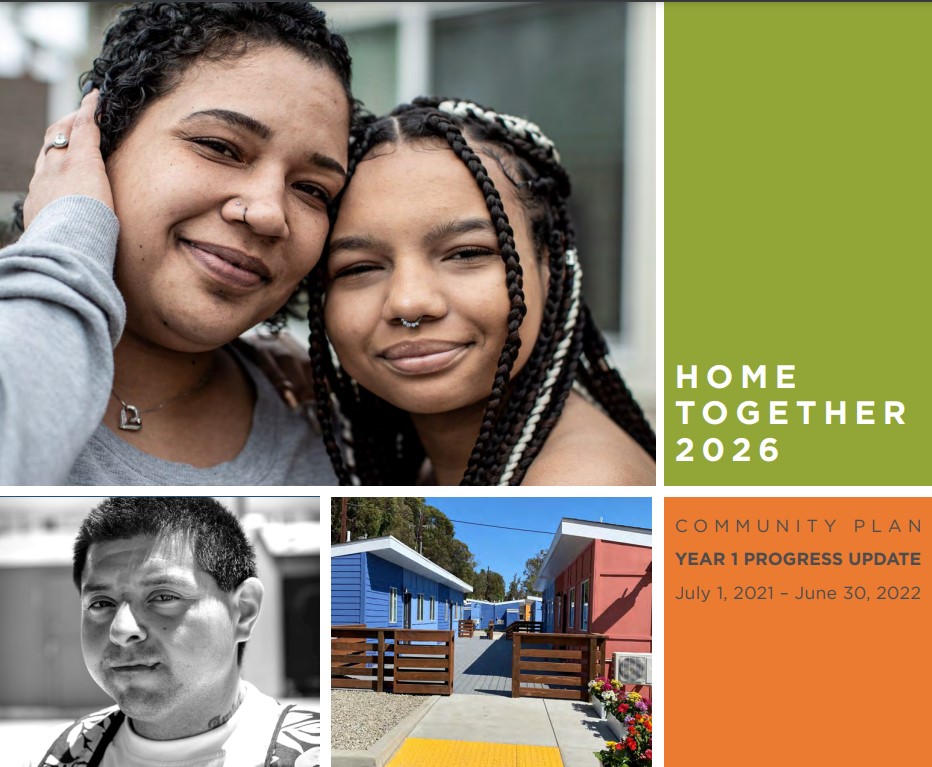
- Home Together Year 2 Progress Update Report
- Appendix A: Funding and Investments
- Appendix B: System Inventory
- Appendix C: Key Performance Measures
Home Together Year 1 Progress Update
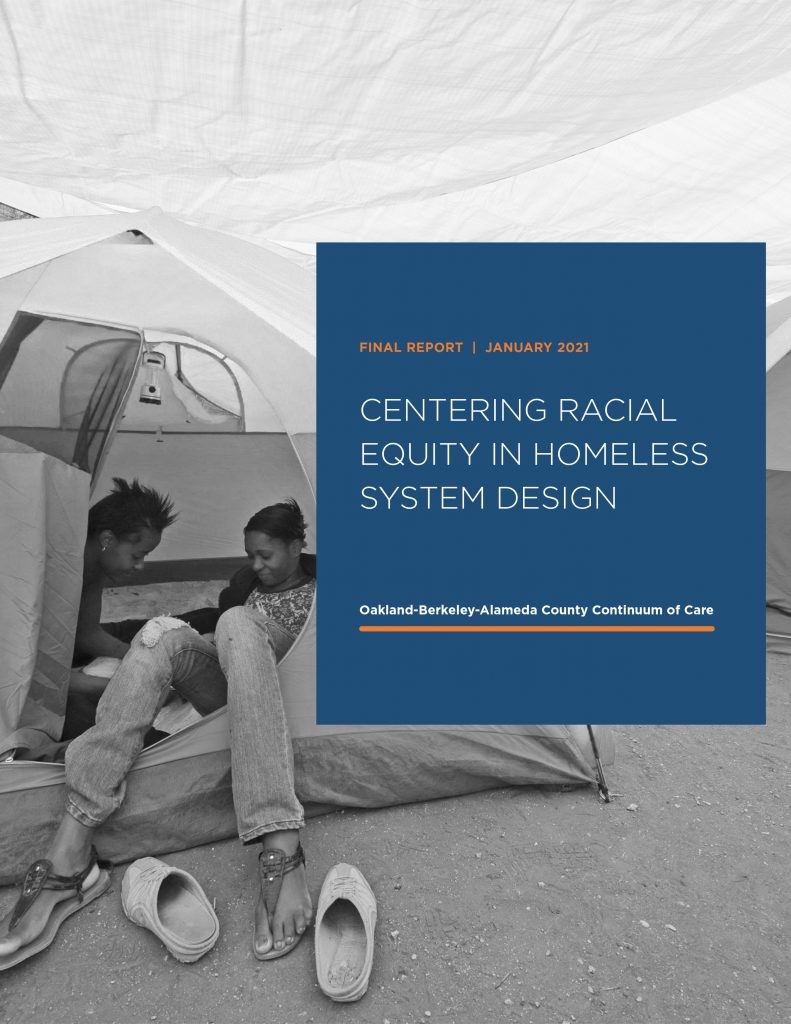
Centering Racial Equity in Homeless System Design Report
Centering Racial Equity in Homeless System Design is a report on the racial equity and system modeling project that was completed in summer 2020. The report provides an overview of the recommendations needed to create and sustain an equitable and effective homeless system of care in Alameda County based upon quantitative and qualitative analyses.
This project was built upon research that identifies structural racism as a primary driver of homelessness, resulting in a homeless population that is disproportionately Black and Native American. Recommendations focus on the approach and resources needed to infuse racial equity into Alameda County’s homeless system. View Executive Summary.
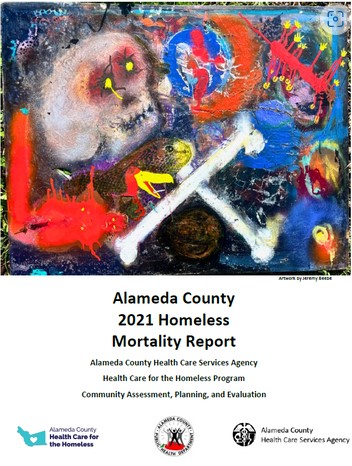
Alameda County Homeless Mortality
The Alameda County Health Care for the Homeless (ACHCH) and Community Assessment, Planning, and Evaluation (CAPE) programs collaborate to collect, report, analyze, and act upon findings on deaths among Alameda County residents experiencing homelessness.The Alameda County Homeless Mortality report seeks to accurately enumerate deaths among people experiencing homelessness to inform policies and practices to reduce preventable deaths, and to reduce the harm that preventable deaths create for families, friends, caregivers, and the community. Homeless Mortality reporting will help our health and housing partners develop interventions to reduce deaths among those experiencing homelessness. For more information visit Alameda County Health Care for the Homeless.
We believe no one should die alone or unknown in homelessness.
All Home Regional Action Plan 2024
All Home’s Regional Action Plan shows what it will take to make homelessness in the Bay Area rare, brief, and one-time for those who experience it. The plan’s core approach is expanding three solutions at the same time (targeted prevention, interim housing, and permanent housing) while strengthening planning and coordination.
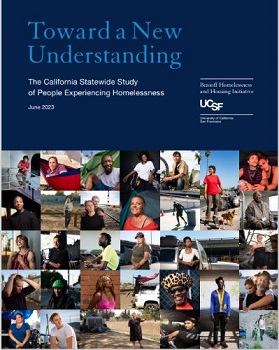
California Statewide Study of People Experiencing Homelessness (CASPEH)
The California Statewide Study of People Experiencing Homelessness (CASPEH) conducted by the University of California, San Francisco (UCSF) Benioff Homelessness and Housing Initiative is the largest representative study of homelessness since the mid-1990s.
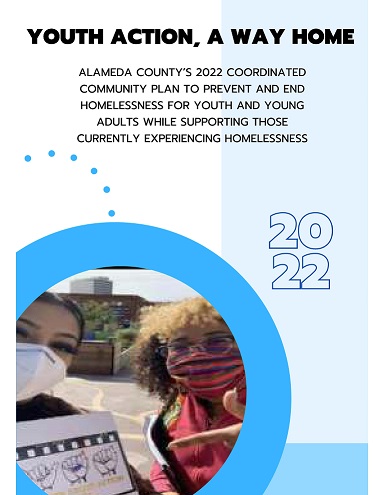
Youth Action: A Way Home
Youth Action: A Way Home coordinated community plan to prevent and end youth homelessness
Youth Action: A Way Home is Alameda County’s Coordinated Community Plan to prevent and end youth homelessness. A youth led and centered process essential to the Youth Homelessness Demonstration Program grant awarded to Alameda County in 2021. The plan identifies goals, objectives and activities needed to prevent and end youth homelessness. This includes specific projects that will be funded with YHDP funds, a joint component housing project and a peer navigation project.
The plan details were informed by a series of community conversations focused on special populations; pregnant and parenting youth, migrant/undocumented youth, youth impacted by the foster/child welfare system, youth impacted by the juvenile justice system and minors (under 18).
This work is a collaboration between OHCC/HCSA, CDA, SSA, the Youth Action Board and ALL IN-Alameda County.
Full Report | Executive Summary

Big Moves for Housing and Economic Security
All Home’s “The Big Moves” are designed to increase housing and economic security for people with extremely low incomes in the Bay Area. They were developed with an eye to what is needed to meaningfully address homelessness and poverty, what opportunities are emerging, and what promising solutions are already in motion. These proposals are complementary to efforts to rapidly reduce unsheltered homelessness, because we will never end homelessness without addressing its root causes. November 2022.
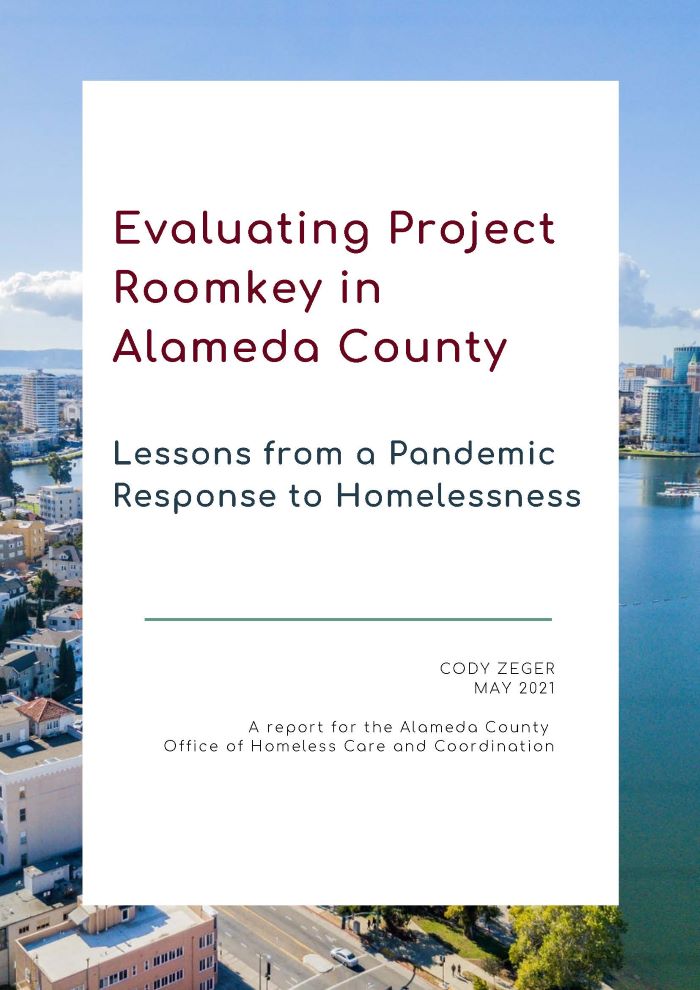
Evaluating Project Roomkey in Alameda County: Lessons from a Pandemic Response to Homelessness
This report represents one of the first studies of Project Roomkey outcomes through an in-depth analysis of Alameda County’s program design and implementation. Using both quantitative and qualitative research, it aims to break down the various components of Alameda County’s Project Roomkey model in order to identify which components were key to improving health and housing outcomes for people experiencing homelessness. May 2021.
